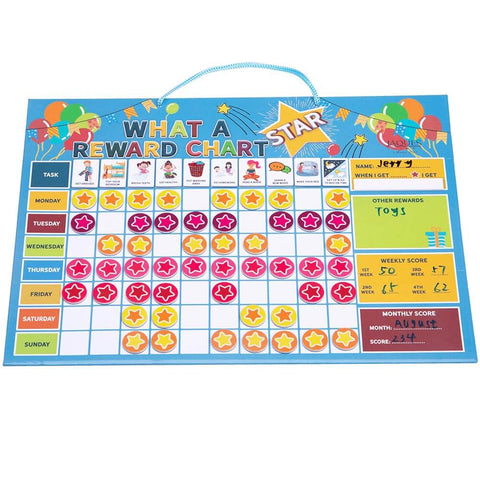Are Reward Charts a Good Idea?

So, just how do you use a reward chart for kids?
-
Use Stickers – Using stickers is a great way to get your child exciting about interacting with their own chart. Doing so adds to the feeling of reward and will create a more positive mentality around good behaviour.
-
Be Clear – Both the reward and the goal your kids are trying to achieve should be firmly set. Little ones are masters of bending the rules. So, be sure to be exact. Otherwise, you may end up over or under-rewarding your child's progress.
-
Make sure that your reward is one that your child wants and one that remains achievable. There is no point dangling a carrot on a stick if it can never be reached. Children of the chart are sure to lose interest if they feel defeated in their best efforts. So, make sure that the goal is not too large and that the reward is, well, rewarding.
-
Let them take control. Ownership over their own progress also acts as a back-up to all the rewards your child is hopefully earning. Whether ticking boxes or sticking with success, let your kid be the ruler of their own sticker chart display.
-
Remain as positive about the chart as you can. By remaining positive, children will start to feel more accomplished in the positive behaviour itself. In the long run, this provides the ideal way to slowly wean kids away from the chart and towards intricately better behaviour.
-
Always avoid making the reward too large. Instead, ensure that the reward is in-keeping with the behaviour they are being rewarded for.
-
Avoid being vague with what you are rewarding your little ones for.
-
Don't use the reward chart to directly inspire good behaviour. Making it an instant fix for good behaviour will remove its fun and worth to tiny tinkers.
-
Make sure it isn't boring. Colour, stickers and interactivity are a must!
-
Avoid inconsistency – Consistency is king when it comes to knowing how to reward children. Your reward chart should follow the same principle. By remaining consistent, you will be able to reinforce the value of good behaviour, with greater success.
When discussing how to reward children, sticker charts for toddlers are a proven method for instilling consistently positive behaviour. For more wonderful learning resources and parenting tips, pay a visit to our Mini Minds Hub – Your number one source of fun and education for children.


